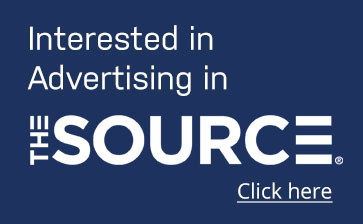Best practices for paper products & associated dispenser technology
Operational consistency and cost containment are essential drivers in healthcare facilities today. For Environmental Services (EVS) leaders, product standardization has emerged as a critical strategy for advancing those goals. Within high-use categories such as paper products and dispensers, there are a number of opportunities to help teams meet and exceed their targets.
GP PRO, a division of Georgia-Pacific Consumer Products (GP PRO, HealthTrust Contract #192), recently partnered with a large health system member of HealthTrust on a standardization initiative. Some of the results are offered here as best practices for all members. While the standardization program centered on a seemingly simple product category, it advanced four strategic priorities for the IDN: cost effectiveness, supply reliability, operational efficiency and sustainability.
Communication inspires alignment

While the end results speak to the success of the initiative, such change requires a solid communication plan from the start, ensuring staff are aware ahead of time, explains Matthew Oglesby, Vice President of Support Services with HealthTrust. “One of the biggest challenges members face when working toward standardization is change management. Change can be uncomfortable, and sometimes that discomfort hinders progress. We have found the key
to overcoming it lies in communicating the ‘why’—explaining the need for standardization and the tangible/positive impacts facilities can expect as a result. When people understand the purpose and the benefits, they are much more likely to embrace the changes as they execute the initiatives.”
And, it is not just EVS staff who need to be aware of changes, adds Bobby Self, Director of EVS with HealthTrust Support Services. “Reaping efficiency and cost-containment benefits requires alignment across an organization. You need to ensure product standardization does not compromise patient outcomes or staff satisfaction, which can be done by consistently communicating with both clinical and nonclinical stakeholders.”

Streamlining for efficiency & cost control
Facilities participating in the case study initiative reported notable efficiencies in both labor and related products. Converting to high-capacity enMotion roll towel dispensers and Compact coreless toilet paper systems reduced SKU counts, eliminated redundant tasks and simplified daily cart preparation.
According to post-initiative survey data, 71% of the healthcare system’s EVS leaders realized significant cost savings within two years; 90% of respondents indicated that product standardization streamlined operations, allowing for more efficient use of storage space.
Enhancing supply chain resilience

For healthcare facilities across the country, the COVID-19 pandemic reinforced the importance of supply chain preparedness. Through standardization with GP PRO paper products, facilities in the case study gained the ability to forecast demand with greater accuracy, which allowed them to reduce inventory waste and more easily redistribute supplies across locations. Alignment with a centralized product formulary further enabled faster restocking and improved coordination with the supplier.
“Standardizing products or SKUs offers clear operational and financial benefits anytime,” shares Oglesby. “However, its value becomes even more critical during times of disruption. With fewer SKUs to manage, both customers and manufacturers can more accurately forecast demand and monitor availability. For example, it’s much easier to maintain control and consistency when you are focused on tracking 40 items instead of 200+. The greater the number of items in play, the higher the risk of missed signals or unmanaged variability. Standardization brings clarity and resilience when it’s needed most,” he adds.
Standardization Delivers
Product standardization has emerged as a critical strategy for advancing healthcare supply chain management goals. Within high-use categories such as paper products & dispensers, there are a number of opportunities to help teams meet & exceed their targets, positively impacting:
- Cost effectiveness
- Supply reliability
- Operational efficiency
- Sustainability
Supporting sustainability goals
Enhancing environmental stewardship was also a key outcome of the member initiative with GP PRO. Automated, one-at-a-time dispensing and longer-lasting refill systems helped reduce overall paper consumption and waste going to a landfill. Many facilities transitioned to brown towels made from 100% recycled fiber, balancing cost efficiency and environmental performance without sacrificing absorbency or softness.
“By embedding sustainability into the standardization process—from reducing pilferage and product waste to offering cost-effective recycled options like brown towels—we help facilities meet their environmental goals without compromising cost or compliance,” explains Abhi Jadhav, Director of Market Intelligence & Sales Enablement at GP PRO.
Keys to success
Standardization at scale requires early alignment, disciplined execution and clear metrics. Oglesby and Self attribute much of the case study members’ success to the strong supplier partnership with GP PRO.
“Members would not be able to achieve high compliance or manage their supplies with ease if it weren’t for a joint commitment to shared goals,” Self explains. Jadhav agrees, emphasizing the value of strong collaboration. “When standardization becomes part of the mindset and not just a project, the long-term impact is significant,” he adds.
READY FOR YOUR OWN PAPER PRODUCTS SUCCESS STORY? Download the GP PRO white paper and learn more best practices for product standardization within your facility.
Share Email Environmental Stewardship, EVS, On-contract product, Q3 2025, Standardization, Sustainability




